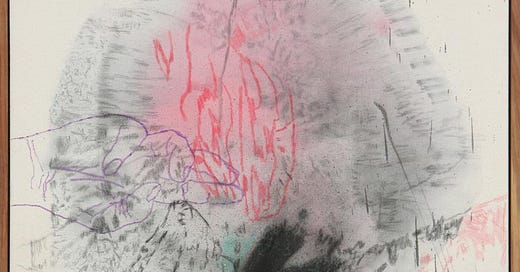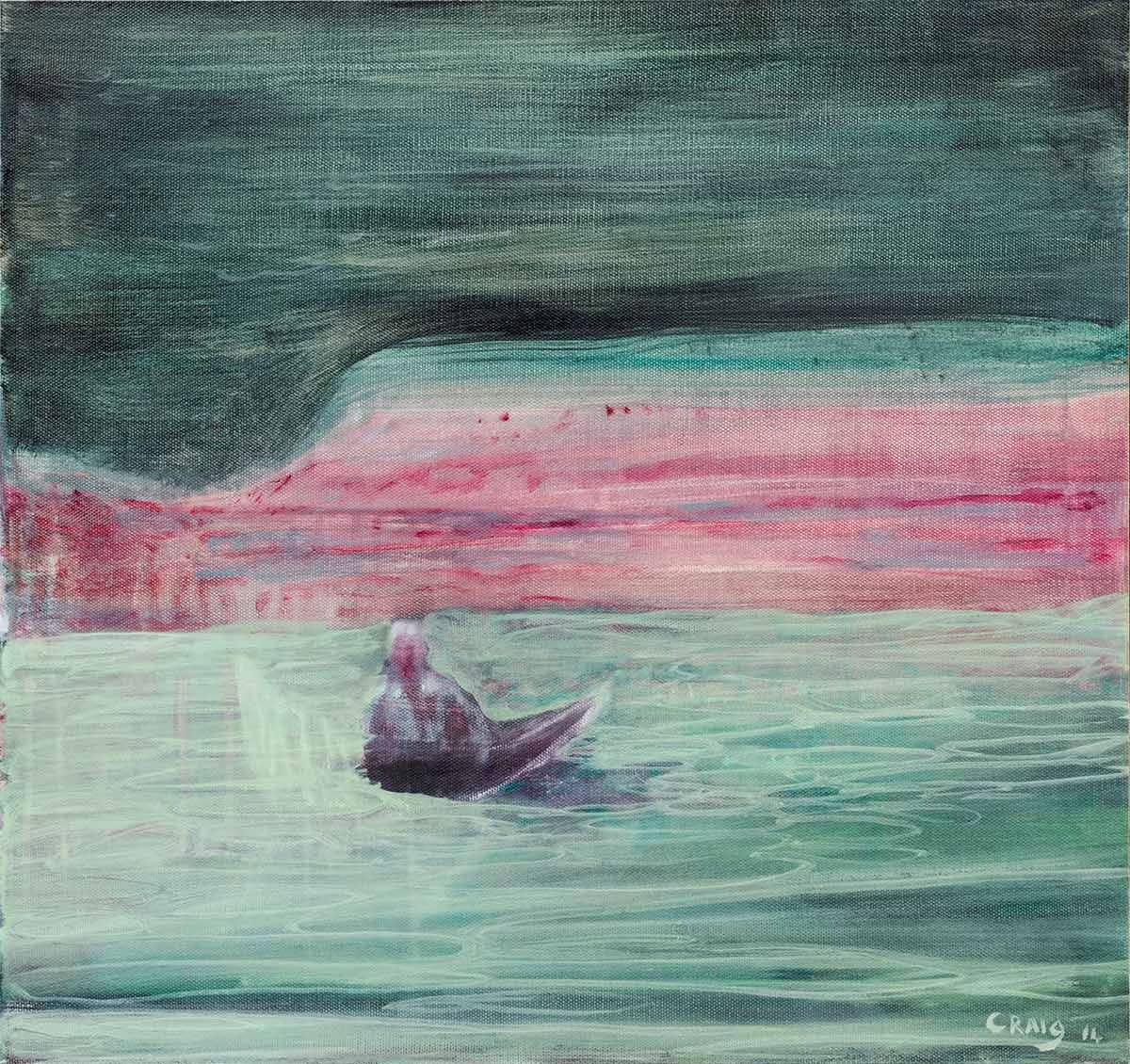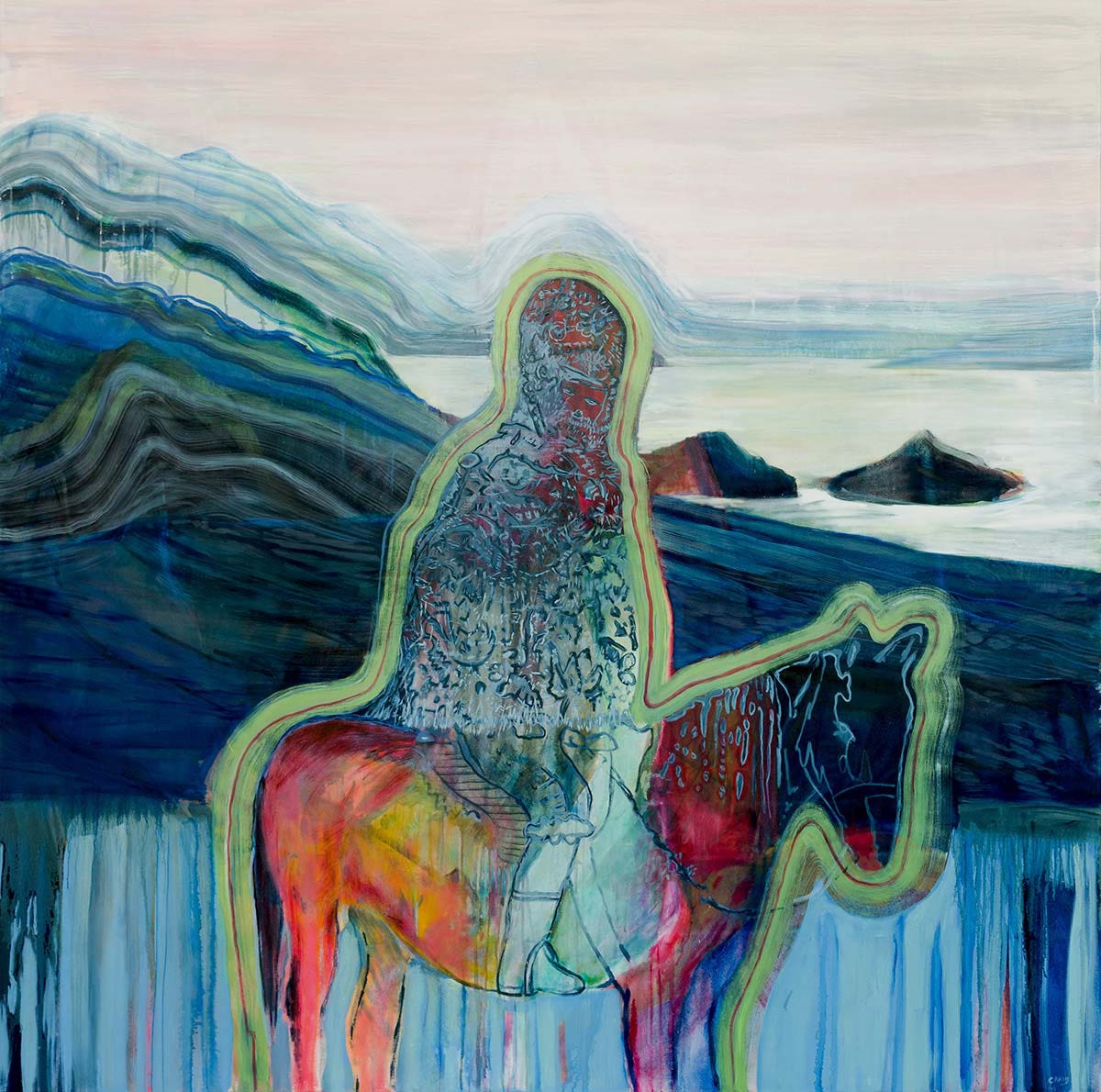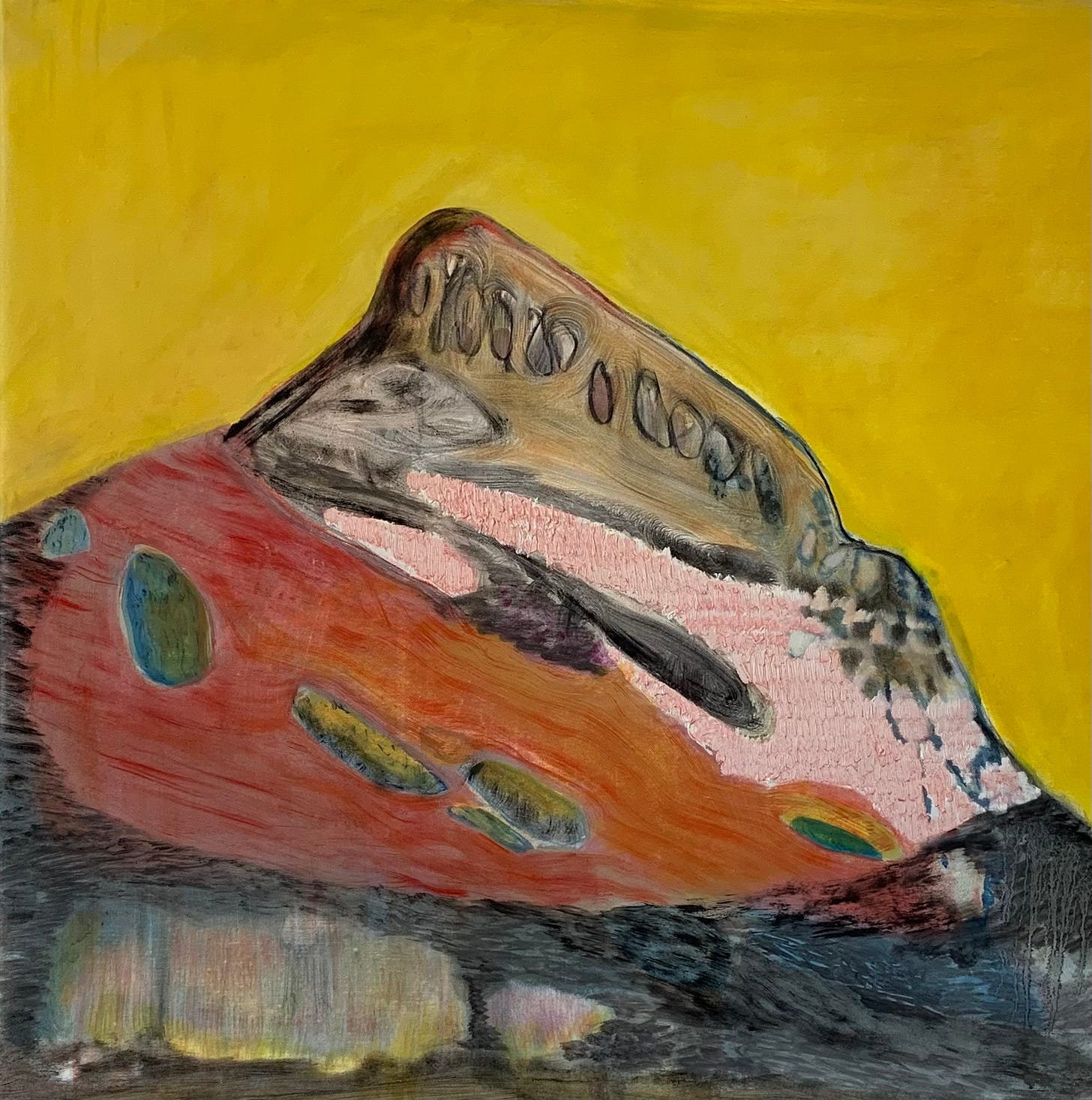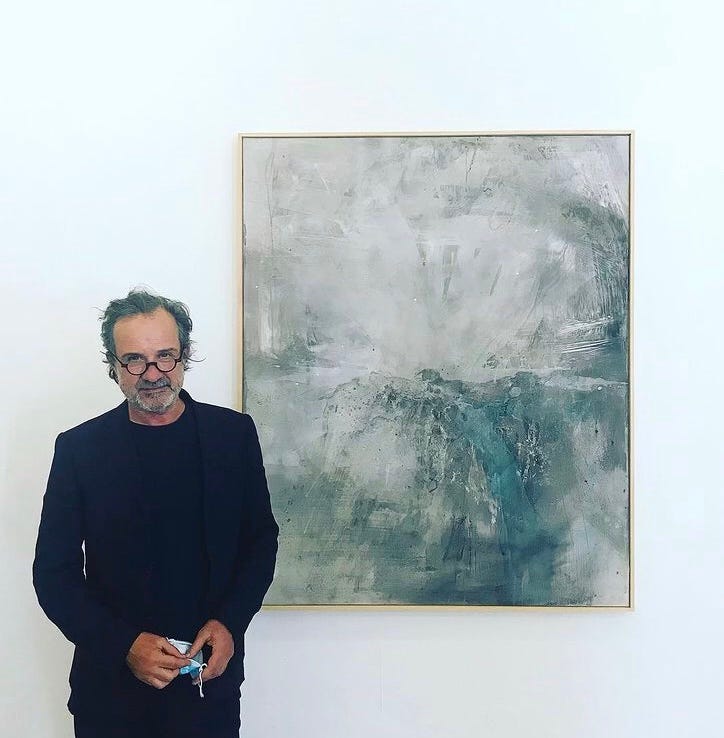Foolish Harmony
A conversation with Tarantula: Authors And Art's Inspiration for March, Craig Smith
Lines, faint and bold colors, and smudges: if you're unsure where to direct your gaze when faced with Craig Smith's art, don't worry. His abstract interplay of lines—sometimes hinting at a figure—draws you in, urging you to engage fully rather than merely observe. Just continue exploring.
Searching for clarity in the titles of his pieces? With a playful sense of humor, they often guide you toward the exact opposite of their apparent meaning. Still confused? Don’t be! Instead, let your eyes refocus. Follow the magic of the twirls and contours, and delve deeper into the translucent pigments on the surface until you stop overthinking.
Only then, an unexpected portal may open, inviting you to move beyond the material and the explanation, venturing deeper into your own inner world. Or, it might simply awaken a quiet curiosity about how a color blends, or the intentional thickness of a line.
This is your moment, standing before Craig’s work: pause to hear the rhythm of your heartbeat - you might just discover the sound of your own foolish harmony.
Tarantula: Authors And Art: You say that your first language is visual. Can you paint a self-portrait for our viewers by using words. Who is Craig Smith?
Craig Smith: A tough question: Who is Craig Smith!
I am a self-taught visual artist born 64 years ago in Cape Town in South Africa. From an early age, I discovered that when I drew and played with my camera, I could replicate the same calmness and focus that I experienced on my daily walks to and from school along a wild river. I looked, and I discovered imagined worlds in the texture of nature, and I knew I had to be an artist. The creative process made everything palatable. The rest—school and people—was just chaos in my mind.
The next thread was how to become an artist, although studying art as a profession was out of the question, apart from the three years of afternoon art classes I was able to get in as a teenager.
After the mandatory national service, I had to get a real job. After a crash course in black and white photography and developing film, I went on a 6-month trip to build a portfolio. I got a foot in the door and worked as an assistant to commercial and fashion photographers. Johannesburg in the 80s was exploding with anti-apartheid activism, and a large part was driven by the creative community: artists, musicians, and writers. I accessed all these communities with my camera. After a stint in London where I picked up painting again, I returned to South Africa in 1989. I was involved in opening two artist-run galleries where I exhibited my paintings.
It was a magical time in South Africa. Mandela was free, and the world came to us. The film industry exploded, and I was drawn into it, working as a production designer. Fast forward to 2005, when I resumed my painting practice, feeling an immense need for artistic balance in my life. In 2007, I moved back to Johannesburg, the creative city, from Cape Town, the film capital. My first solo show was in 2013, and I joined Kalashnikov Gallery in 2014.
In 2019 I received a studio visit from the Swedish embassy in the guise of a cultural attaché. Six years later, I am now married to the mentioned cultural attaché and living in Stockholm. I am still painting and playing with my cameras.
Still, visual literacy is my strength. Public speaking, small talk, and working a room are far removed from my comfort zone. Losing myself in the process or surface, whether it is the act of drawing, painting, or finding solutions in a three-dimensional space with a set built-in film is where I am at home.
Nice to meet you! You mention that you started your career as an art designer on films and commercials before moving onto fine arts. What prompted the transition, and do you ever find that your experience on set influences your current practice?
My experience from the set influenced my painting practice, especially the years spent as a scenic artist, where I was tasked with experimenting with materials to create patinas that had a history, onto newly built surfaces—i.e., turning wood into copper into cement into life. That fascination with texture and the imagery that can be found or coaxed or discovered serves as a strong foundation for my current painting practice.
For example, during lockdown (South Africa had strict lockdown rules, and we were basically barred from leaving our homes), I returned to my roots as a scenic artist and started experimenting with painting with cement and pigments. I was trying to carry on the process from the show Irrelevant, when I embedded imagery into raw canvas. I have always been drawn to marks that seem casual and found but in reality are extremely deliberate. So I use pigment and charcoal mixed with acrylic-treated cement. This led to the show Invitation in 2020.
We learned from your ‘self-portrait in words’ that you currently live and work between Johannesburg and Stockholm. Do both cities influence your work in different ways, or does one create a sense of longing for the other?
I'm definitely influenced by my surroundings. In the past, I've noticed that each studio I've worked in has produced unique bodies of work due to the lighting and circumstances. Moving to Stockholm provided me with a new light to work with, but I was also affected by wandering around the many art museums and discovering painters I was previously unaware of, such as Carl Fredrik Hill. Change brings new outlooks that work themselves into the surface, and also into my photography. Exploration and discovery have always been a strong motivator. I don’t work form a sense of longing. The north and south appear in the work and I like the balance and the duality of it.
You discovered Carl Fredrik Hill in Stockholm; Cy Twombly is another artist who was cited as an influence on your work. When did you discover Twombly, and what is it about his work that resonates with you?
The reality is that I was unaware of Cy Twombly until a journalist saw my show Irrelevant and drew the connection. After reading her post, I looked at his work and could see her point clearly.
I, on the other hand, was inspired by ancient Khoisan rock art and how it effortlessly presents studied lines, lines of economy that hold so much power, emotion, and movement magic. Their belief was that the surface served as a portal, a veil through which you may enter a magical dimension populated by gods and muses.
On the body of work mentioned by the journalist, I tried to incorporate the images into the weave of the raw canvas. I accomplished this by applying graphite and pigment to the back of the raw canvas, leaving what seemed like ghosts on the surface. This is pretty much what Cy Twombly does in a roundabout way.
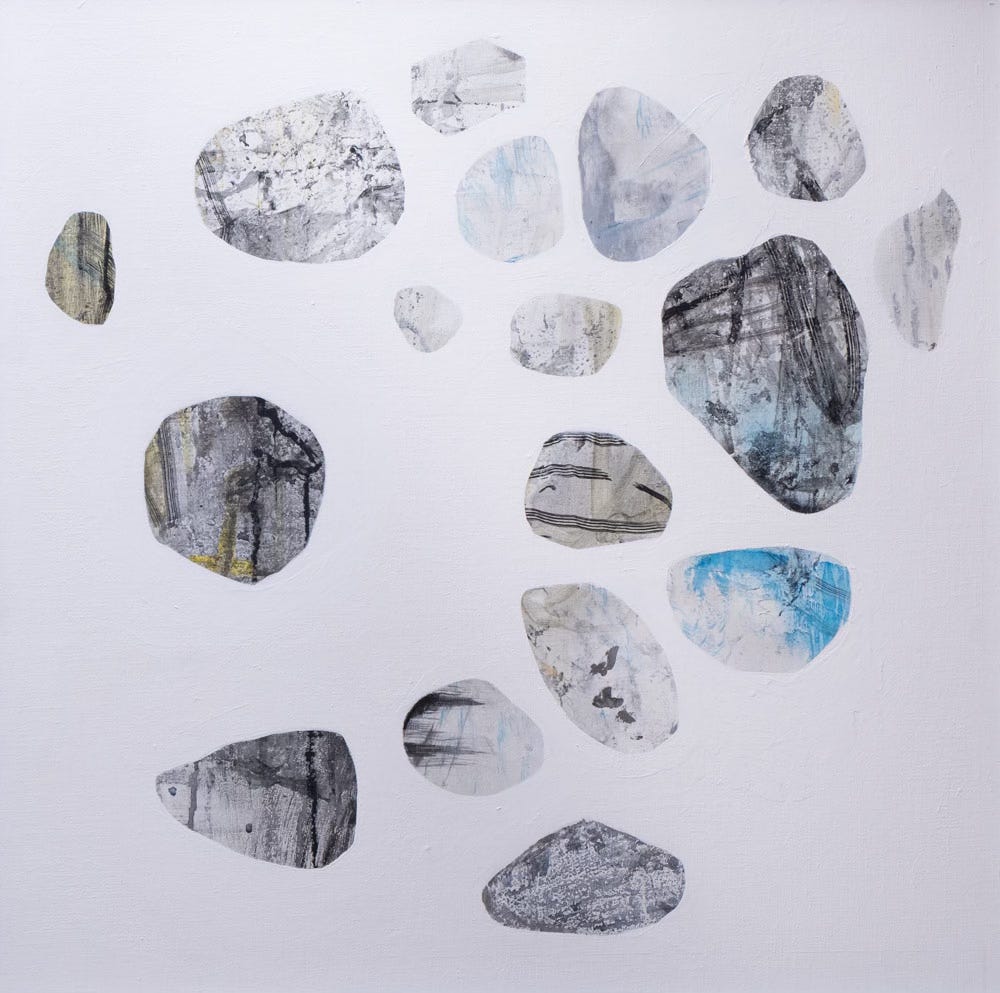
Do you have any rituals in order to come in touch with your muses?
I have to show up every day. The muses require a lot of work and are elusive. Like trying to catch snowflakes with a tennis racket. I generally do a nine to five in the studio, where I spend most of my time looking and distracting myself with cleaning and arranging the workspace until my mind is distracted from thoughts.
I find that after only a few weeks of doing this and a few paintings, everything suddenly clicks, and the muses respond by sending through a piece of work, which I refer to as a message from my future self as it seems to land effortlessly. Then it is back to looking and looking, working over paintings that never seem to resolve themselves. Painting is 80% problem-solving; I just have to show up, try not to think, observe, be curious, and be brave enough to ignore what seems precious. This is the search for foolish harmony.
Is it presumptuous to say that each of your paintings is like a mini-pause, an opportunity to meditate?
I don't believe so, as my painting process is a form of meditation. The self-reflection and calming of all the clutter we accumulate in our daily lives; the devices bombardment and inflammation of modern living. The act of painting makes all of this acceptable to me. So, yes, I hope that the viewer slows down and becomes drawn into the surface by following the brush strokes and patterns.
In your artistic statement you also propose to your viewers to let go of expectations and discover their own narratives. Is your art just a springboard to the viewers’ own self-discovery?
I believe that the purpose of art is to open up pathways to narratives or memories that lay within our inner-verse. I don’t want to have strong narratives appear in my work. I want to give the viewer space to form their own story. Experiencing art is therapeutic and it should suggest or nudge.
That said, the current work on show at Liljevalchs Vårsalong are complete landscapes but hopefully with enough ambiguity to give the viewer space to roam.
While your first language is visual, you also create thought-provoking titles, such as Irrelevant. What role do titles play in your work?
I am a fan of self-effacing irony in a humorous way. I often use titles as a red herring, as a way of not controlling the visual narrative. With the title Irrelevant I used its ambiguity to point out that everything in the moment of looking is irrelevant. With the next body of work, Invitation, I gave names to the paintings that pointed to emotions or feelings we have that seem to have no name. My titles should complete the work, but in no way name or guide the narrative.
With some of your paintings currently on display at the Vårsalongen at Liljevalchs in Stockholm, which just opened and will run until April 27th, what can we expect next from you? Any upcoming exhibitions or new projects in the works?
Currently I am in Johannesburg packing up my archive and Joburg studio to send to Sweden. When I return to Sweden, I will be working on a duo show with a friend and fellow artist Christina Hedlund at Studio 44. Last August, I started a project on the island Gotland using a large format camera to photograph port-scapes – portraits of landscapes. I want to follow that thread further in other parts of Sweden, as I find everything I look at new and exciting and I want to capture it on film. Anybody out there have a dark room I could use?
Good luck with your new projects! If you would like to find out more about Craig Smith, visit his website and Instagram page. If you are located in Stockholm, don’t forget to visit the Liljevalchs Vårsalong where you can see three of Craig’s paintings.
Buy our print magazine by clicking on the following link
https://tarantulaauthorsandart.substack.com/publish/post/129709764

